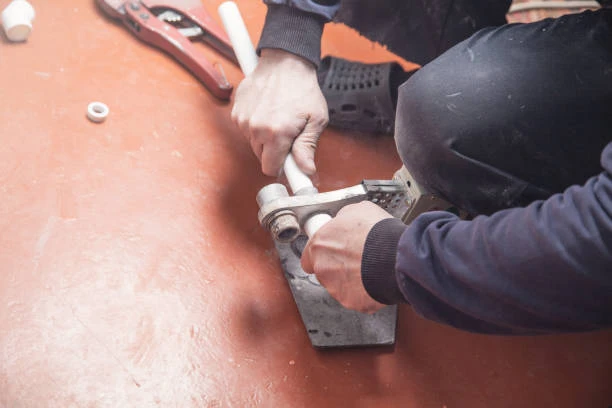Introduction
The use of (Polypropylene Random Copolymer) PP-R water pipe and fittings has transformed the plumbing and construction sectors by offering a durable, eco-friendly solution for water distribution. PP-R pipes have quickly become a preferred choice for both residential and industrial applications due to their resilience, affordability, and versatility. Let’s dive deeper into the world of PP-R water pipe and fittings, from their characteristics and applications to the benefits they bring.
What are PP-R Water Pipes and Fittings?
PP-R water pipes are made from Polypropylene Random Copolymer, a material known for its flexibility and high resistance to heat and chemicals. PP-R fittings are the connectors and accessories used with these pipes, providing seamless integration in various plumbing systems. Due to their high heat tolerance, PP-R pipes are suitable for transporting both hot and cold water.
Evolution of PP-R Pipes in the Plumbing Industry
PP-R pipes were introduced to the plumbing industry in the late 20th century, primarily in Europe. Over the years, they have gained popularity worldwide due to their ease of installation and longevity. Unlike traditional metal pipes, PP-R pipes do not corrode, significantly extending their service life and reducing maintenance costs.
Properties of PP-R Water Pipes and Fittings
1. Durability and Strength
PP-R pipes are resistant to cracking and mechanical damage, making them ideal for high-stress applications.
2. Corrosion Resistance
They are non-corrosive, meaning they won’t deteriorate over time, even when exposed to various chemicals.
3. Low Thermal Conductivity
With low thermal conductivity, PP-R pipes maintain the temperature of water better, reducing energy costs in hot water systems.
Types of PP-R Pipes and Fittings
PP-R pipes come in various forms, including straight pipes, elbows, tees, and couplings. Specialized fittings are also available, such as reducers, end caps, and flanges, allowing for customized plumbing systems that meet specific requirements.
Manufacturing Process of PP-R Pipes and Fittings
PP-R pipes and fittings are made using a process called extrusion, where raw polypropylene material is melted and shaped. The material is then cooled and cut into desired lengths. This manufacturing technique ensures that each pipe and fitting meets high standards of durability and performance.
Advantages of Using PP-R Water Pipes
1. Long Lifespan
PP-R pipes can last up to 50 years, depending on the application, making them a long-term investment.
2. Environmentally Friendly
The production process of PP-R pipes generates minimal waste, and they are also recyclable, contributing to sustainability.
3. Cost-Effective
Due to their long lifespan and low maintenance requirements, PP-R pipes are a cost-effective choice for plumbing.
Applications of PP-R Pipes in Various Sectors
PP-R pipes are widely used in residential plumbing, especially for hot and cold water supply. In the commercial and industrial sectors, they are utilized for water distribution, heating, and cooling systems. Additionally, PP-R pipes are commonly used in agricultural irrigation systems due to their durability and resistance to chemicals.
Comparison of PP-R Pipes with Other Pipe Materials
PP-R vs. PVC
While both PP-R and PVC pipes are resistant to corrosion, PP-R has a higher temperature tolerance, making it suitable for hot water.
PP-R vs. Copper
Copper pipes are durable and heat-resistant but are costly and prone to corrosion in some environments. PP-R pipes offer a cost-effective and corrosion-resistant alternative.
PP-R vs. HDPE
HDPE is commonly used for industrial purposes but lacks the high-temperature resistance of PP-R, limiting its application in hot water systems.
Installation Process of PP-R Pipes and Fittings
Installing PP-R pipes is relatively simple, thanks to their lightweight and flexibility. Here are the basic steps:
- Cut the pipe to the desired length.
- Use a special welding tool to fuse the pipe and fittings together.
- Check for leaks to ensure a secure connection.
Maintenance of PP-R Water Pipes and Fittings
Regular maintenance is minimal with PP-R pipes. However, periodic inspections can help identify any wear and tear or potential leaks. Clean the pipes periodically to prevent buildup, especially in systems carrying hot water.

Challenges in the PP-R Pipe Market
Although PP-R pipes offer many benefits, they face challenges such as competition from established materials like copper and PVC. Additionally, some regions lack awareness of PP-R pipes, limiting their adoption.
Future of PP-R Pipes and Fittings
The future of PP-R pipes looks promising, with advancements in technology making them even more durable and versatile. Innovations such as improved joint sealing methods and enhanced chemical resistance are expected to drive the market forward.
Environmental Impact of PP-R Pipes
PP-R pipes have a low environmental footprint, as they are recyclable and require less energy to produce compared to metal pipes. Manufacturers are also exploring ways to make PP-R pipes biodegradable, further boosting their eco-friendly appeal.
Conclusion
PP-R water pipe and fittings represent a modern, efficient, and sustainable solution for plumbing systems. Their durability, ease of installation, and environmental benefits make them a preferred choice in various industries. As technology advances, PP-R pipes are expected to play an even larger role in sustainable plumbing solutions worldwide.
FAQs
1. What is the primary advantage of PP-R pipes over metal pipes?
PP-R pipes are corrosion-resistant, lightweight, and cost-effective, making them ideal for hot and cold water applications.
2. Can PP-R pipes be used for both hot and cold water?
Yes, PP-R pipes are designed to handle both hot and cold water systems efficiently.
3. How long can PP-R pipes last?
Under optimal conditions, PP-R pipes can last up to 50 years.
4. Are PP-R pipes eco-friendly?
Yes, they are recyclable and require less energy to manufacture, making them a sustainable choice.
5. What are the main uses of PP-R pipe fittings?
PP-R pipe fittings are primarily used to connect and redirect pipes in water distribution systems for both residential and commercial plumbing.


















